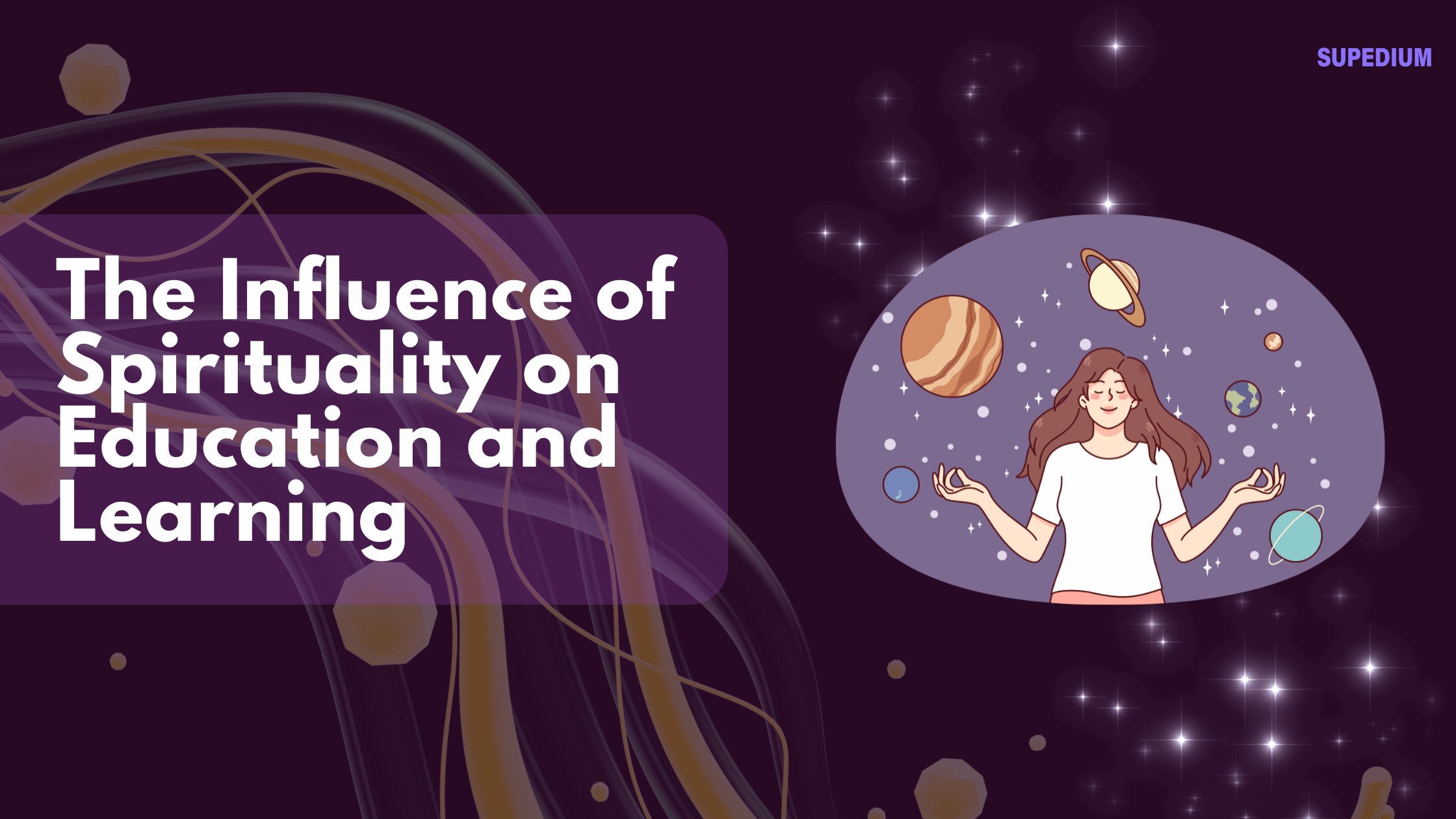Table of Contents
![]()
I. Introduction
Spirituality, often understood as a personal quest for meaning and connection, extends beyond religious boundaries, encompassing a broad spectrum of beliefs and practices. As educational landscapes evolve, the interplay between spirituality and education is increasingly recognized as vital. This article explores the influence of spirituality on education and learning, emphasizing its historical context, theoretical frameworks, and practical implications.
II. Theoretical Framework
A. Spiritual Development Theories
Several theories elucidate the developmental aspects of spirituality. James Fowler’s stages of faith development highlight how individuals evolve spiritually throughout their lives. Similarly, Ken Wilber’s integral theory posits that spiritual growth integrates various dimensions of human experience, including cognitive, emotional, and ethical aspects. These frameworks provide valuable insights into how spirituality can inform educational practices.
B. Educational Philosophies Incorporating Spirituality
Holistic education emphasizes the interconnectedness of mind, body, and spirit, advocating for a learning environment that nurtures the whole child. Constructivist approaches, which encourage active engagement and personal meaning-making, also align well with spiritual development. Furthermore, social-emotional learning (SEL) recognizes the importance of emotional awareness and interpersonal skills, fostering a spiritual connection among students and teachers.
III. Spirituality’s Role in Learning Environments
A. Creating a Nurturing Atmosphere
A nurturing classroom environment is fundamental for effective learning. When educators prioritize spiritual dimensions, they cultivate safe and supportive spaces where students feel valued and understood. Strong teacher-student relationships can enhance trust and encourage open dialogue, fostering a conducive atmosphere for exploration and growth.
B. Mindfulness and Presence
Incorporating mindfulness practices into education has gained traction in recent years. Mindfulness promotes awareness and presence, allowing students to focus more effectively and engage deeply with their learning. Research indicates that mindfulness can lead to improved attention, reduced stress, and enhanced academic performance.
C. Community and Belonging
Spirituality often emphasizes community and interconnectedness. By fostering a sense of belonging in educational settings, students can build meaningful relationships with their peers and teachers. Collaborative learning experiences not only enhance academic outcomes but also nurture a supportive community where students thrive emotionally and socially.
IV. Impact on Student Outcomes
A. Academic Performance
Studies have shown a positive correlation between spirituality and academic performance. Students who engage with spiritual practices often exhibit greater intrinsic motivation and resilience, leading to enhanced academic outcomes. This intrinsic drive encourages a deeper engagement with learning materials and fosters a lifelong love of knowledge.
B. Emotional and Psychological Well-Being
Spirituality serves as a powerful coping mechanism for many students. Engaging in spiritual practices can reduce anxiety and stress, promoting emotional stability. Furthermore, students who cultivate a sense of purpose and connection are better equipped to navigate challenges, enhancing their overall psychological well-being.
C. Moral and Ethical Development
Spirituality plays a crucial role in shaping moral and ethical development. By instilling values such as empathy, compassion, and integrity, spirituality can significantly influence students’ character development. Educational approaches that integrate spirituality often emphasize social responsibility and the importance of contributing positively to society.
V. Curriculum and Pedagogical Approaches
A. Integrating Spirituality into the Curriculum
Many educational institutions are successfully integrating spiritual themes into their curricula. For instance, schools that emphasize character education often incorporate discussions on values, ethics, and social justice. Case studies reveal that such integrative approaches not only enhance students’ spiritual awareness but also improve overall academic engagement.
B. Pedagogical Strategies
To effectively nurture spirituality in education, various pedagogical strategies can be employed. Experiential learning opportunities, such as outdoor education and community service projects, encourage students to reflect on their experiences and develop a deeper understanding of themselves and their place in the world. Reflection and contemplative practices, such as journaling and guided meditation, can also promote personal insight and spiritual growth.
VI. Challenges and Critiques
A. Secular vs. Spiritual Approaches in Education
The integration of spirituality into secular education poses several challenges. Balancing spiritual inclusion while respecting diverse beliefs can be difficult. Some educators may face resistance from stakeholders who advocate for strictly secular approaches to education, raising questions about the role of spirituality in public schooling.
B. Measurement and Assessment
Assessing spiritual development presents a unique challenge, as it is inherently subjective and varies widely among individuals. Educational institutions must find ways to acknowledge and support spiritual growth while adhering to traditional assessment standards, a task that requires sensitivity and creativity.
VII. Case Studies and Examples
A. Institutions with Strong Spiritual Foundations
Several educational models prioritize spirituality as a core component. Montessori and Waldorf schools, for example, emphasize holistic development, integrating spiritual elements into their curricula. These institutions foster environments that encourage creativity, critical thinking, and emotional intelligence.
B. Successful Programs and Initiatives
Numerous programs have emerged to promote mindfulness and spirituality in schools. Initiatives that incorporate mindfulness practices have shown positive results in reducing stress and improving focus among students. Service learning projects linked to spiritual values also enhance students’ understanding of social responsibility and community engagement.
VIII. Future Directions
A. Trends in Education and Spirituality
As interest in mindfulness and social-emotional learning continues to grow, educational institutions are increasingly recognizing the value of incorporating spirituality into their practices. Online platforms promoting spiritual education are also emerging, providing resources and communities for educators seeking to integrate spirituality into their teaching.
B. Research Opportunities
Further empirical research is essential to understand the complexities of spirituality in education. Studies exploring the impact of spirituality on academic outcomes across diverse educational contexts can provide valuable insights and help shape future educational policies.
IX. Conclusion
The influence of spirituality on education and learning is profound and multifaceted. As we navigate an increasingly complex world, recognizing the importance of spirituality in education can lead to more holistic and impactful learning experiences. By fostering environments that prioritize spiritual development, educators can nurture not only academic success but also the emotional and moral growth of their students, ultimately contributing to a more compassionate and interconnected society. The call to action for educators and policymakers is clear: embrace spirituality as a vital component of education for the benefit of future generations.
Share This





Be the first to comment